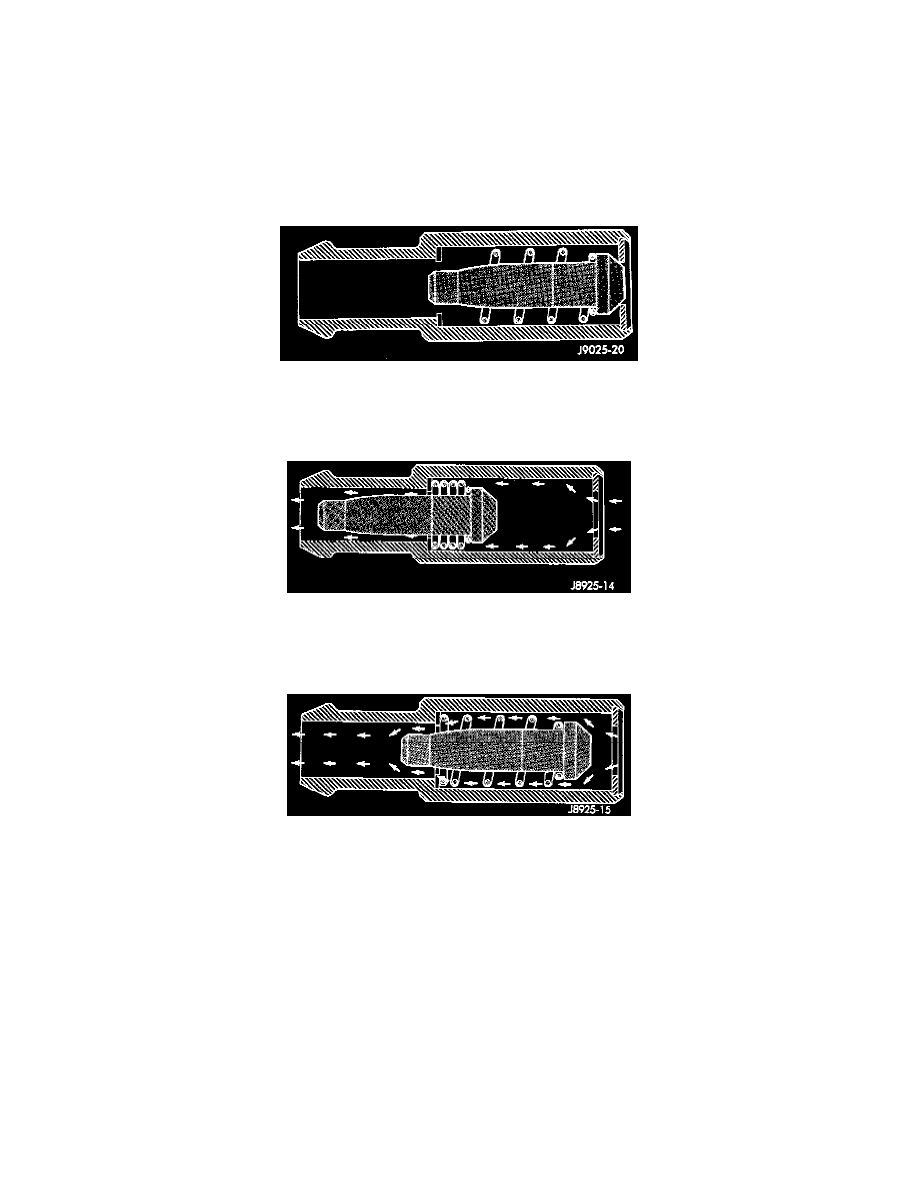Neon L4-2.0L VIN C (1998)

Positive Crankcase Ventilation: Description and Operation
Intake manifold vacuum removes crankcase vapors and piston blow-by from the separator. Emissions pass through the PCV valve into the intake
manifold plenum. The vapors become part of the calibrated air-fuel mixture, are burned and then expelled with the exhaust gases. The air cleaner
supplies make up air when the engine does not have enough vapor or blow-by gases.
NOTE: In this system, fresh air does not enter the crankcase.
PCV VALVE
The PCV valve contains a spring loaded plunger. The plunger meters the amount of crankcase vapors routed into the combustion chamber based
on intake manifold vacuum.
Fig. 7 Engine Off Or Engine Backfire - No Vapor Flow
When the engine is not operating or during an engine backfire, the spring forces the plunger back against the seat. This prevents vapors from
flowing through the valve (Fig. 7).
Fig. 8 High Intake Manifold Vacuum - Minimal Vapor Flow
When the engine is at idle or cruising, high manifold vacuum is present. At these times manifold vacuum is able to completely compress the spring
and pull the plunger to the top of the valve (Fig. 8). In this position there is minimal vapor flow through the valve.
Fig. 9 Moderate Intake Manifold Vacuum - Maximum Vapor Flow
During periods of moderate intake manifold vacuum the plunger is only pulled part way back from the inlet. This results in maximum vapor flow
through the valve (Fig. 9).
